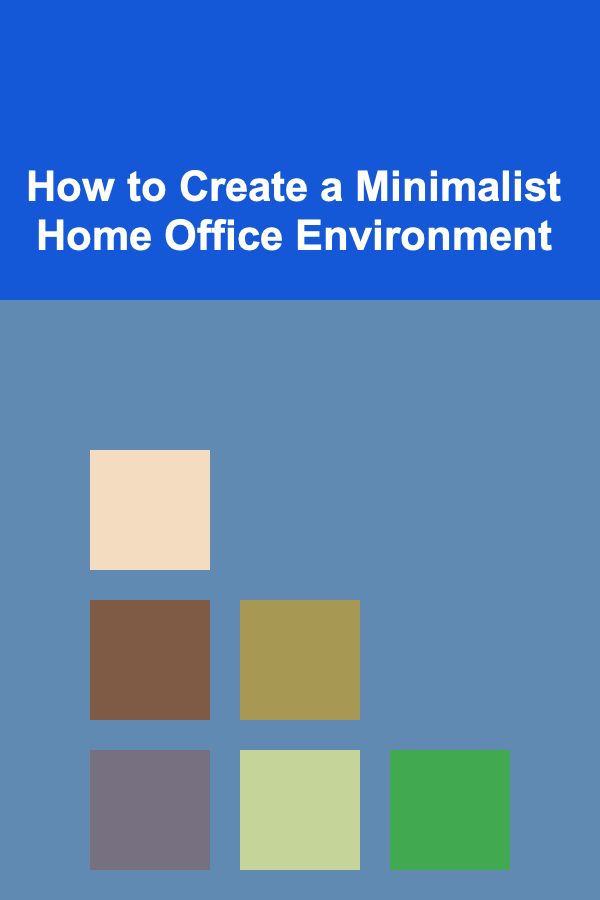
Creating a Welcoming Outdoor Living Area: A Comprehensive Guide
ebook include PDF & Audio bundle (Micro Guide)
$12.99$6.99
Limited Time Offer! Order within the next:

Transforming your outdoor space into a welcoming and functional living area is an investment in your well-being and the enjoyment of your home. More than just a patio with some chairs, a well-designed outdoor living area extends your indoor living space, offering a place to relax, entertain, and connect with nature. This guide will delve into the key considerations and steps involved in creating an outdoor oasis that reflects your personal style and meets your specific needs.
Defining Your Vision and Needs
Before you start shopping for furniture or sketching layouts, it's crucial to define your vision for the space. What do you want to do in your outdoor living area? How will you use the space? Consider the following questions:
- What activities will take place here? Dining, lounging, cooking, playing games, working remotely, or a combination of these?
- How many people will typically use the space? Consider both everyday use and occasional entertaining.
- What is your design style? Modern, rustic, bohemian, traditional, or something else? Your outdoor space should complement the style of your home.
- What is your budget? Having a realistic budget from the outset will help you prioritize your choices and avoid overspending.
- What are the limitations of your space? Consider size, shape, sun exposure, privacy, and existing features.
Answering these questions will provide a solid foundation for your design choices. For example, if you plan to host frequent dinner parties, you'll need a larger dining table and comfortable seating for guests. If you primarily want a relaxing space for reading, a comfortable lounge chair or hammock might be your priority. Consider creating a mood board with images that inspire you to visualize the overall aesthetic you're aiming for.
Zoning the Space: Think about dividing your outdoor area into distinct zones based on function. A dining zone, a lounging zone, and perhaps even a cooking zone can create a more organized and versatile space. Consider how these zones will flow together and interact with each other.
Example: A family with young children might prioritize a play area with durable, easy-to-clean surfaces, while a couple who enjoys grilling might focus on creating a dedicated outdoor kitchen area.
Planning the Layout and Design
Once you have a clear vision, it's time to plan the layout. Consider the following factors:
- Size and Shape: Work with the existing dimensions and shape of your outdoor space. Consider how the space connects to your house.
- Traffic Flow: Ensure that people can move easily through the space without bumping into furniture or obstacles. Create clear pathways.
- Sun and Shade: Observe the movement of the sun throughout the day. Identify areas that receive direct sunlight and those that are shaded. Plan your layout accordingly, providing adequate shade where needed.
- Privacy: Consider how to create privacy from neighbors or passersby. This can be achieved with fencing, hedges, trees, or strategically placed screens.
- Views: Maximize any existing views and minimize any undesirable views. Position seating areas to take advantage of pleasant vistas.
Creating a Scaled Drawing: A scaled drawing or digital rendering of your outdoor space can be incredibly helpful in visualizing the layout. Measure your space accurately and use graph paper or design software to create a plan that shows the placement of furniture, plants, and other features. This will allow you to experiment with different layouts before making any commitments.
Considering the Elements: Think about how the weather will impact your outdoor space. Will it be exposed to strong winds, heavy rain, or intense heat? Choose materials and furniture that are durable and weather-resistant.
Tip: Use painter's tape to outline the placement of furniture on your patio or deck. This will give you a better sense of the scale and how the space will feel.
Choosing the Right Materials and Furniture
The materials and furniture you choose will significantly impact the look, feel, and durability of your outdoor living area. Consider the following:
- Furniture: Select furniture that is both comfortable and weather-resistant. Popular options include:
- Wicker: Lightweight and durable, wicker is a classic choice for outdoor furniture. Synthetic wicker is more weather-resistant than natural wicker.
- Teak: A durable and beautiful hardwood that is naturally resistant to rot and insects. Teak furniture requires minimal maintenance.
- Aluminum: Lightweight and rustproof, aluminum is a good option for modern outdoor furniture.
- Steel: Strong and durable, steel furniture is often powder-coated to prevent rust.
- Recycled Plastic: An environmentally friendly option that is durable, weather-resistant, and available in a variety of colors and styles.
- Flooring: Choose flooring that is durable, slip-resistant, and aesthetically pleasing. Options include:
- Wood Decking: A classic choice that provides a warm and inviting feel. Requires regular maintenance to prevent rot and decay.
- Composite Decking: A low-maintenance alternative to wood decking that is made from recycled materials.
- Pavers: Durable and versatile, pavers are available in a variety of colors, shapes, and materials.
- Concrete: A durable and affordable option that can be stained or stamped to create a variety of looks.
- Gravel: A budget-friendly option that provides good drainage.
- Fabrics: Select fabrics that are fade-resistant, water-resistant, and easy to clean. Look for outdoor-rated fabrics made from materials like Sunbrella or Olefin.
- Accessories: Choose accessories that complement your design style and add comfort and personality to the space. Options include:
- Outdoor Rugs: Define seating areas and add warmth and texture.
- Throw Pillows: Add color and comfort to your furniture.
- Outdoor Lighting: Create ambiance and provide safety.
- Planters: Add greenery and life to the space.
- Outdoor Speakers: Enjoy music and entertainment outdoors.
Prioritizing Quality: While it can be tempting to save money by purchasing cheaper furniture and materials, investing in quality items will ultimately save you money in the long run. Durable furniture and materials will withstand the elements and last for years, reducing the need for replacements.
Example: Investing in high-quality teak furniture may be more expensive upfront, but it will last for decades with minimal maintenance, making it a worthwhile investment.
Creating Shade and Privacy
Providing shade and privacy is essential for creating a comfortable and inviting outdoor living area. Consider the following options:
- Umbrellas: A versatile and affordable option for providing shade. Choose an umbrella that is large enough to cover your seating area and that is made from durable materials. Consider a cantilever umbrella for more flexible placement.
- Awnings: Provide permanent shade and protection from the elements. Retractable awnings offer the flexibility to adjust the amount of shade as needed.
- Pergolas: Create a semi-shaded area and add architectural interest to your outdoor space. Pergolas can be covered with climbing plants for added shade and beauty.
- Gazebos: Provide a fully enclosed outdoor space that can be used year-round. Gazebos offer protection from the sun, rain, and wind.
- Trees and Shrubs: Planting trees and shrubs can provide natural shade and privacy. Choose plants that are appropriate for your climate and soil conditions. Consider the mature size of the plants when planning your landscape.
- Fencing: Provides privacy and security. Choose a fence that complements the style of your home and that meets local building codes.
- Screens: Lightweight and portable, screens can be used to create privacy and block wind. Choose a screen that is made from durable materials and that is easy to move. Consider options like bamboo screens, lattice panels, or fabric screens.
Layering Shade: Consider layering different types of shade to create a more comfortable and dynamic space. For example, you might use a pergola covered with climbing plants, combined with an umbrella over a seating area.
Tip: When choosing plants for privacy, consider evergreen varieties that will provide year-round screening.
Incorporating Lighting
Lighting is essential for creating ambiance and extending the usability of your outdoor living area into the evening hours. Consider the following options:
- String Lights: Add a festive and whimsical touch. String lights are available in a variety of styles and colors.
- Pathway Lighting: Provides safety and defines walkways. Choose low-voltage or solar-powered lights for energy efficiency.
- Spotlights: Highlight architectural features or landscaping.
- Lanterns: Add a warm and inviting glow. Use lanterns with candles or battery-operated lights.
- Outdoor Lamps: Provide task lighting for reading or dining.
- Fire Pits and Fireplaces: Create a cozy and inviting atmosphere. Fire pits and fireplaces can also provide warmth on cool evenings.
Layering Lighting: Similar to shade, layering different types of lighting can create a more dynamic and functional space. Combine ambient lighting (such as string lights), task lighting (such as outdoor lamps), and accent lighting (such as spotlights) to create a well-lit and inviting outdoor area.
Smart Lighting: Consider using smart lighting systems that can be controlled remotely. This allows you to adjust the brightness and color of your lights from your smartphone or tablet.
Example: Use string lights to create a festive atmosphere for a party, and then dim them down to a soft glow for a relaxing evening.
Adding Greenery and Plants
Incorporating greenery and plants is essential for creating a natural and inviting outdoor living area. Consider the following:
- Container Gardens: A versatile and easy way to add plants to your outdoor space. Choose containers that complement your design style and that are appropriate for the plants you choose.
- Flower Beds: Create a colorful and vibrant display of flowers. Choose flowers that are appropriate for your climate and soil conditions.
- Hanging Baskets: Add visual interest and color to your outdoor space.
- Trees and Shrubs: Provide shade, privacy, and beauty. Choose trees and shrubs that are appropriate for your climate and soil conditions.
- Herbs: Grow your own herbs for cooking. Herbs can be grown in containers or in the ground.
- Vertical Gardens: A space-saving way to add plants to your outdoor area. Vertical gardens can be created using a variety of materials, such as pallets, trellises, or hanging planters.
Choosing the Right Plants: Select plants that are appropriate for your climate, soil conditions, and sun exposure. Consider the mature size of the plants when planning your landscape. Choose plants that are low-maintenance if you don't have a lot of time to spend gardening.
Attracting Pollinators: Plant flowers that attract bees, butterflies, and other pollinators. This will help to support the local ecosystem and add beauty to your outdoor space.
Tip: Group plants with similar watering needs together to simplify your watering routine.
Enhancing Comfort and Functionality
To truly create a welcoming outdoor living area, focus on enhancing comfort and functionality. Consider these additions:
- Outdoor Kitchen: A fully equipped outdoor kitchen can include a grill, sink, refrigerator, and countertop space. This allows you to prepare and cook meals outdoors, making entertaining easier.
- Outdoor Bar: A dedicated bar area is perfect for mixing drinks and serving guests.
- Fire Pit or Fireplace: Adds warmth and ambiance. Perfect for cool evenings.
- Comfortable Seating: Invest in comfortable seating that encourages relaxation. Consider lounge chairs, sofas, and dining chairs with cushions.
- Bug Control: Mosquitoes and other pests can ruin your outdoor experience. Consider using citronella candles, mosquito repellent, or a mosquito netting. Professional pest control services are also an option.
- Heating Options: Extend the usability of your outdoor space into the cooler months with patio heaters, fire pits, or outdoor fireplaces.
- Outdoor Television: Enjoy movies and sporting events outdoors. Choose a television that is designed for outdoor use and that is protected from the elements.
- Storage Solutions: Keep your outdoor space organized and clutter-free with storage solutions such as outdoor storage boxes, benches with storage, or shelving units.
Creating a Focal Point: Designate a focal point to draw the eye and create a sense of visual interest. This could be a fire pit, a water feature, or a beautiful piece of art.
Example: A strategically placed outdoor rug can define a seating area and add a pop of color and pattern to your outdoor space.
Maintaining Your Outdoor Living Area
Once you've created your dream outdoor living area, it's important to maintain it to keep it looking its best. Consider the following:
- Cleaning: Regularly clean your furniture, flooring, and accessories to remove dirt, dust, and debris.
- Protecting Furniture: Cover your furniture during periods of inclement weather to protect it from the elements.
- Watering Plants: Water your plants regularly, especially during dry periods.
- Pruning Plants: Prune your plants to maintain their shape and health.
- Repairing Damage: Repair any damage to your furniture, flooring, or accessories as soon as possible.
- Winterizing: Prepare your outdoor living area for winter by storing furniture indoors or covering it with protective covers. Disconnect hoses and sprinklers to prevent freezing.
Regular Inspections: Conduct regular inspections of your outdoor space to identify any potential problems, such as leaks, cracks, or pest infestations.
Following Manufacturer Instructions: Always follow the manufacturer's instructions for cleaning and maintaining your furniture, appliances, and other outdoor products.
Tip: Create a maintenance schedule to ensure that you are regularly cleaning, protecting, and repairing your outdoor living area.
Budget Considerations and Prioritization
Creating a welcoming outdoor living area can range in cost depending on the scope of the project. It's essential to establish a realistic budget and prioritize your needs and wants. Here's a breakdown of budget considerations:
- Establish a Realistic Budget: Determine how much you're willing to spend on the entire project. Research the cost of materials, furniture, and labor (if you're hiring professionals).
- Prioritize Your Needs: Identify the essential elements that will make your outdoor space functional and enjoyable. These might include comfortable seating, shade, and lighting. Focus on these core elements first.
- Phase the Project: If your budget is limited, consider phasing the project over time. Start with the most important elements and add more features as your budget allows.
- DIY vs. Hiring Professionals: Determine which tasks you can handle yourself and which require professional help. DIY projects can save money, but they require time and skill.
- Shop Around: Compare prices from different retailers and contractors to find the best deals. Look for sales and discounts.
- Consider Used or Refurbished Items: You can often find high-quality used or refurbished outdoor furniture and accessories at a fraction of the cost of new items.
- Focus on Quality over Quantity: Invest in durable, high-quality items that will last for years, rather than buying cheaper items that will need to be replaced frequently.
- Allocate for Unexpected Costs: Set aside a contingency fund to cover unexpected costs that may arise during the project.
Examples of Budget Allocation:
- Budget-Friendly Option: Focus on comfortable seating, basic lighting (string lights), container gardening, and DIY projects.
- Mid-Range Option: Invest in quality outdoor furniture, a pergola or umbrella for shade, upgraded lighting fixtures, and professional landscaping.
- High-End Option: Create a fully equipped outdoor kitchen, a custom-built fireplace, high-end furniture, and professional design and installation services.
Legal and Permitting Considerations
Before starting any major outdoor living area project, it's crucial to check local building codes and regulations and obtain any necessary permits. This ensures that your project complies with local laws and avoids potential fines or delays. Here's a checklist of legal and permitting considerations:
- Check Local Building Codes: Research the building codes and zoning regulations in your area. These codes may dictate the size, location, and type of structures you can build on your property.
- Obtain Necessary Permits: Depending on the scope of your project, you may need permits for building a deck, installing a fence, constructing an outdoor kitchen, or adding electrical or plumbing features. Contact your local building department to determine which permits are required.
- Homeowners Association (HOA) Restrictions: If you live in a community with a homeowners association, review the HOA's rules and regulations to ensure that your project complies with their guidelines. You may need to submit your plans to the HOA for approval before starting work.
- Property Line Setbacks: Be aware of property line setbacks, which dictate how close you can build to your property boundaries. Setbacks are typically established by local zoning regulations.
- Easements: Check for any easements on your property, which grant others the right to use a portion of your land for specific purposes, such as utility lines or access roads. Avoid building on or obstructing easements.
- Safety Regulations: Ensure that your outdoor living area complies with all safety regulations, such as those related to fire safety, electrical safety, and accessibility.
- Hire Licensed Professionals: If you're hiring contractors for your project, make sure they are licensed and insured. This will protect you from liability in case of accidents or property damage.
Consequences of Non-Compliance: Failure to comply with local building codes and regulations can result in fines, stop-work orders, or even the removal of structures. It's always best to err on the side of caution and obtain the necessary permits before starting your project.
By carefully considering these steps and tailoring them to your specific needs and preferences, you can create a welcoming outdoor living area that you and your family will enjoy for years to come. Remember to prioritize comfort, functionality, and aesthetics to create a space that reflects your personal style and enhances your lifestyle.

How to Create a Budget for Home Renovations
Read More
How to Create a Minimalist Home Office Environment
Read More
How to Plan a Family Scavenger Hunt Indoors
Read More
How to Use Online Platforms to Start a Global Side Hustle
Read More
Mastering Public Relations: Advanced Strategies for Effective PR Campaigns and Influence
Read More
Why You Should Use Transparent Containers for Easy Access
Read MoreOther Products

How to Create a Budget for Home Renovations
Read More
How to Create a Minimalist Home Office Environment
Read More
How to Plan a Family Scavenger Hunt Indoors
Read More
How to Use Online Platforms to Start a Global Side Hustle
Read More
Mastering Public Relations: Advanced Strategies for Effective PR Campaigns and Influence
Read More